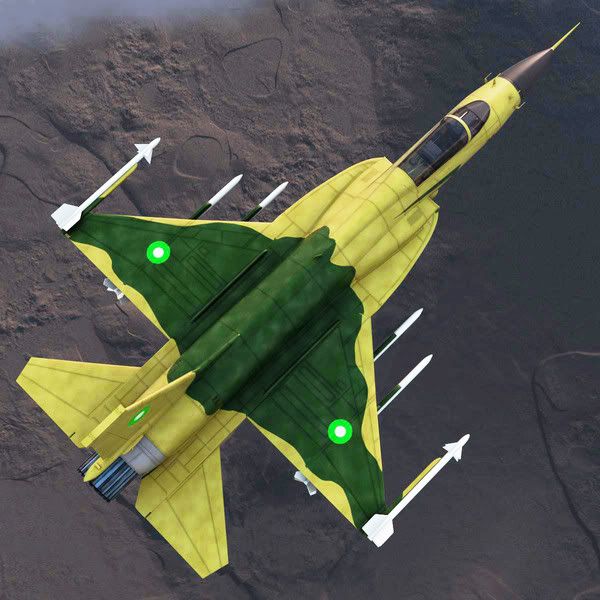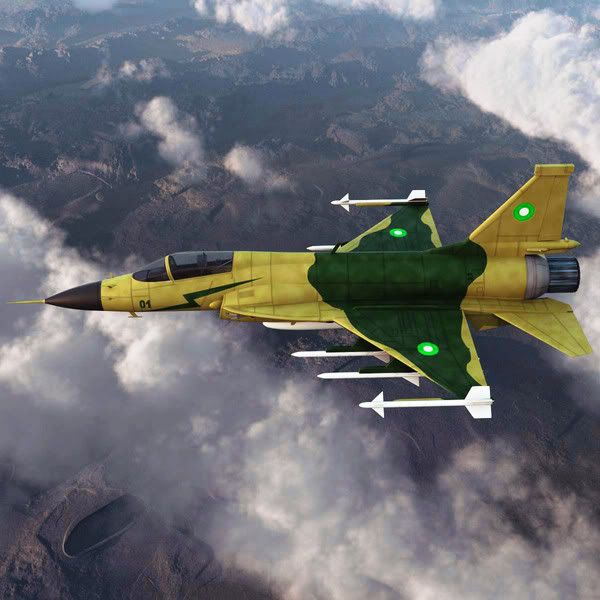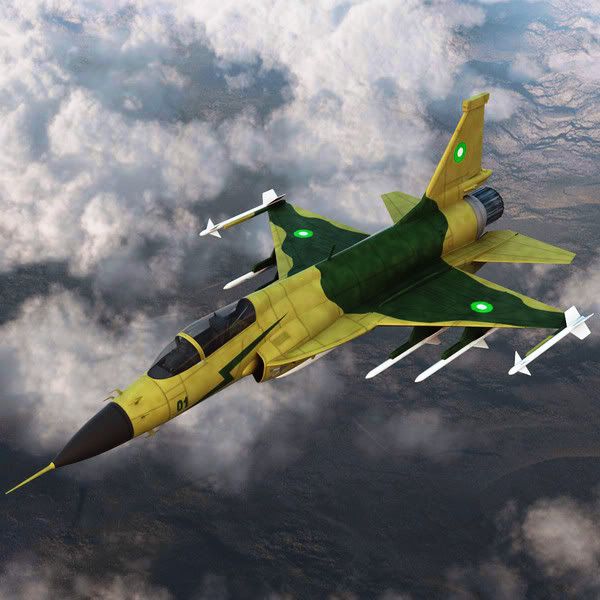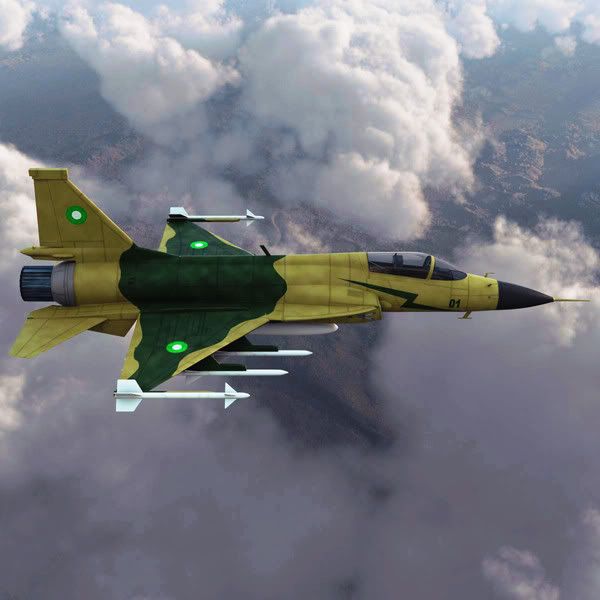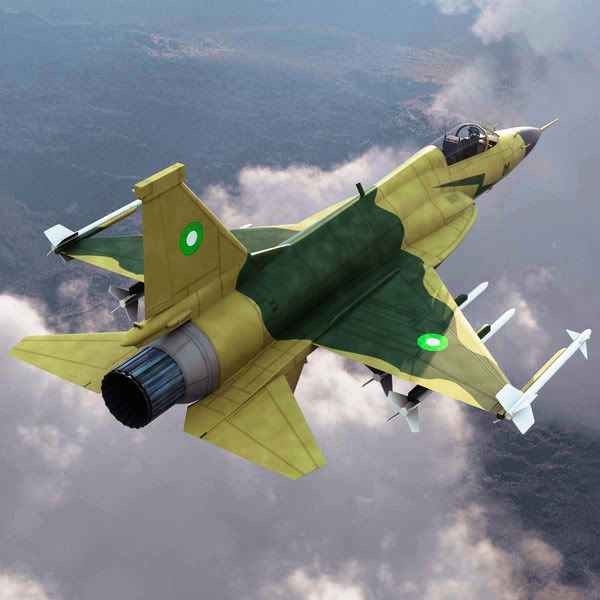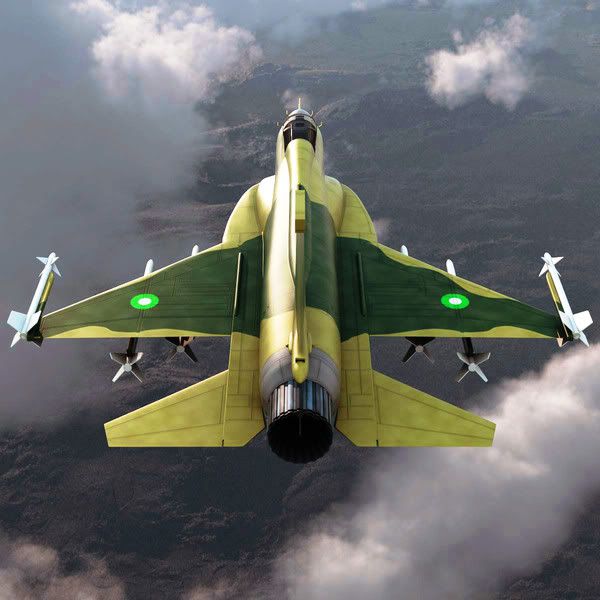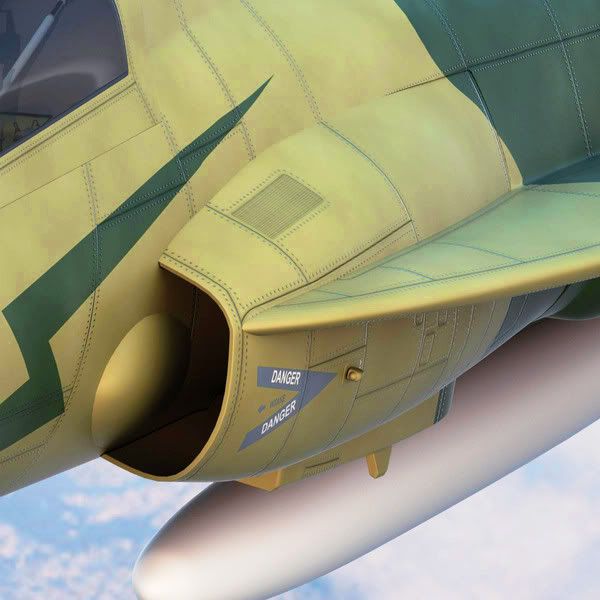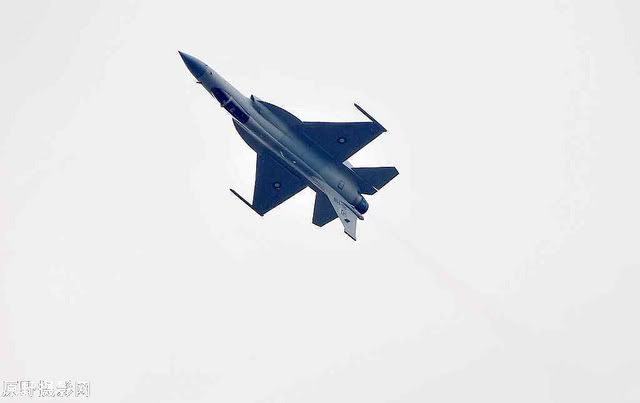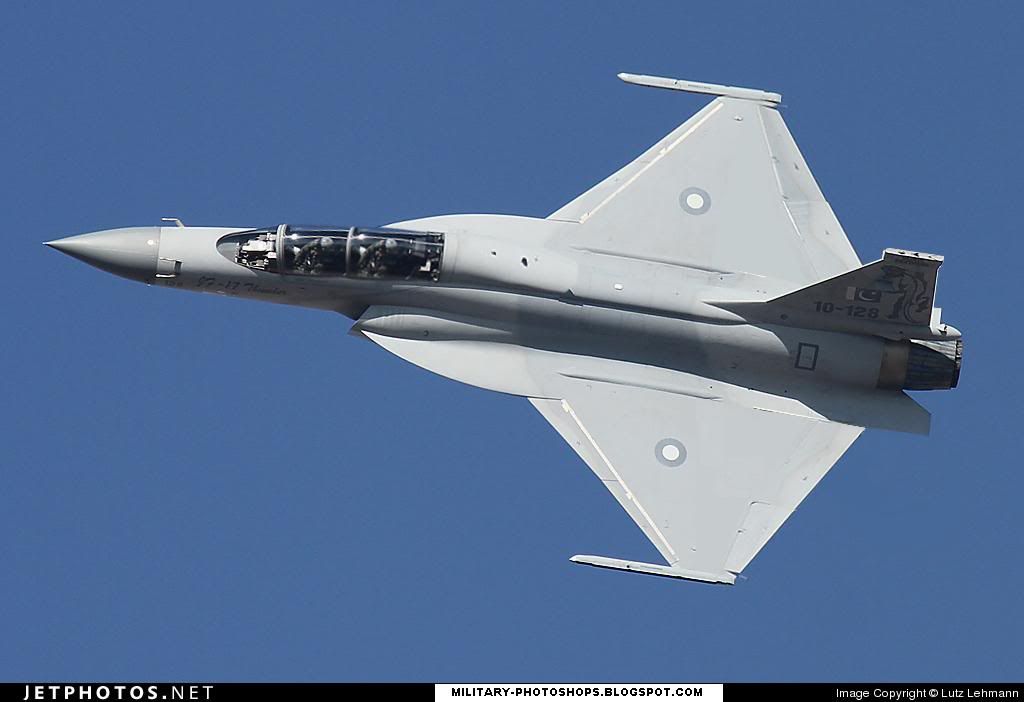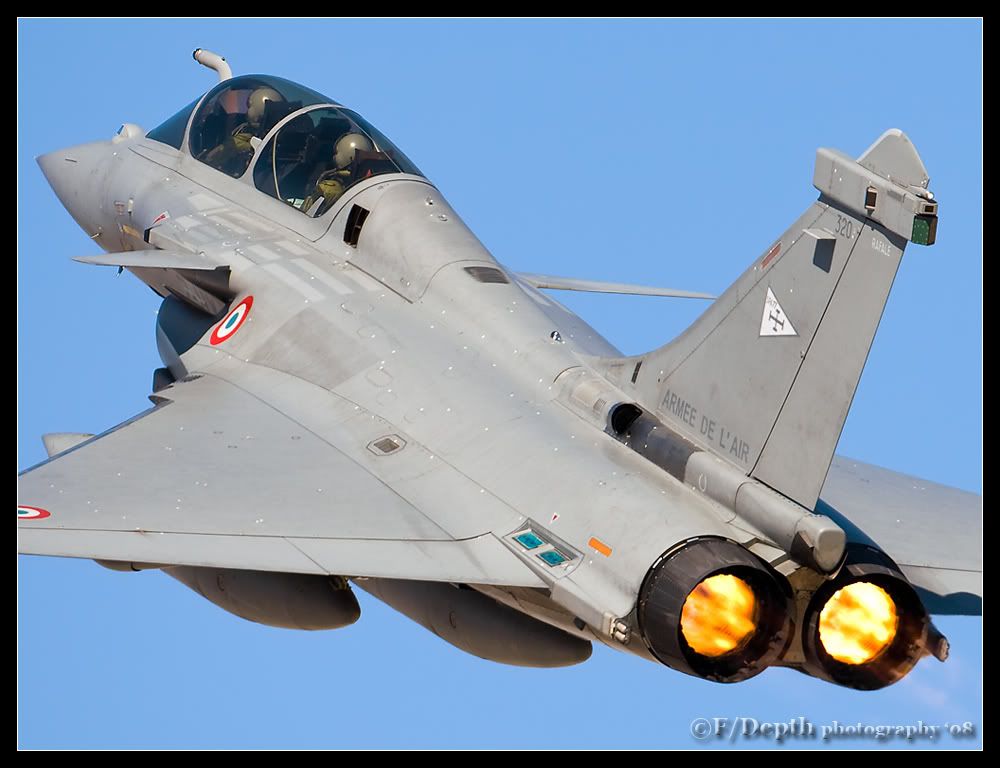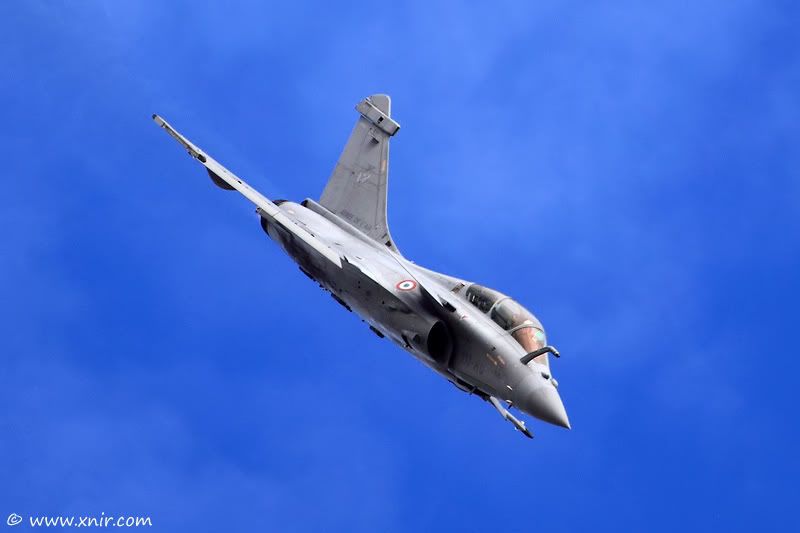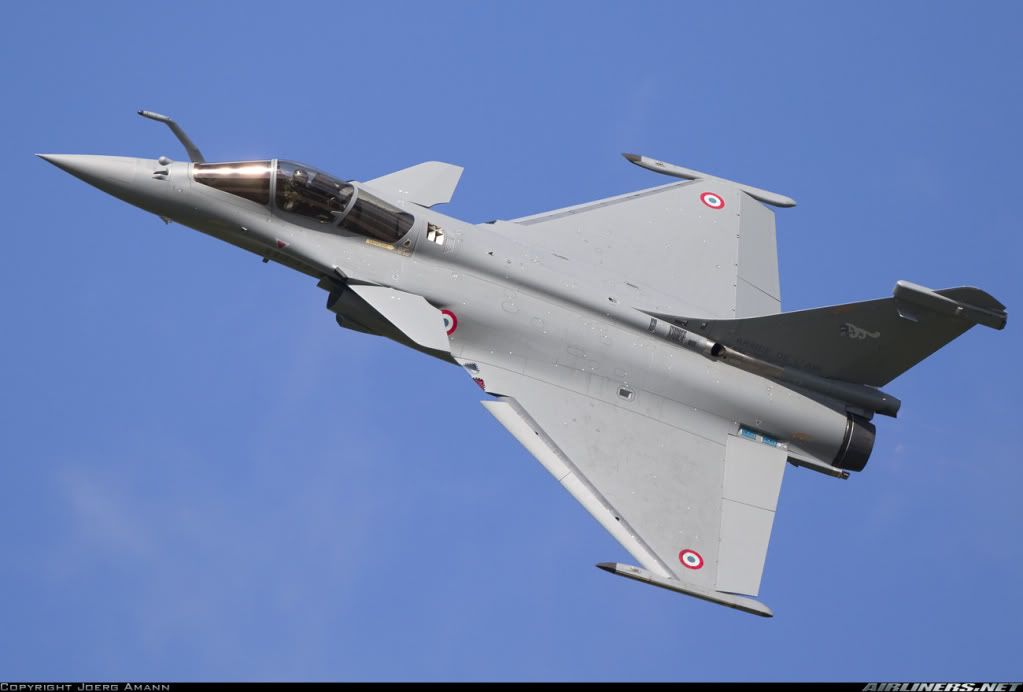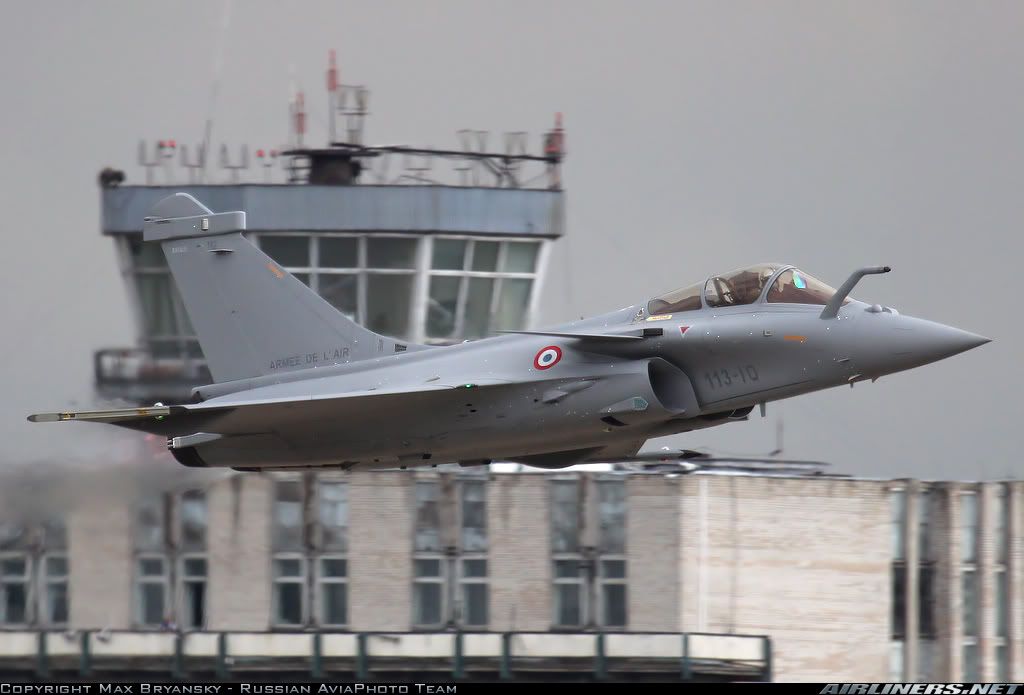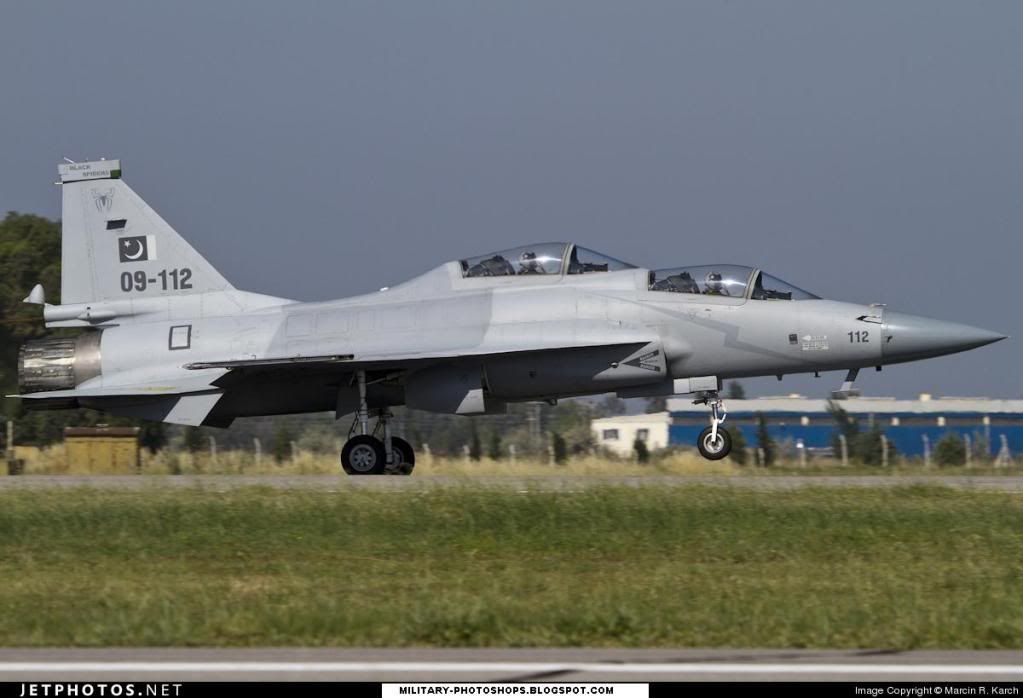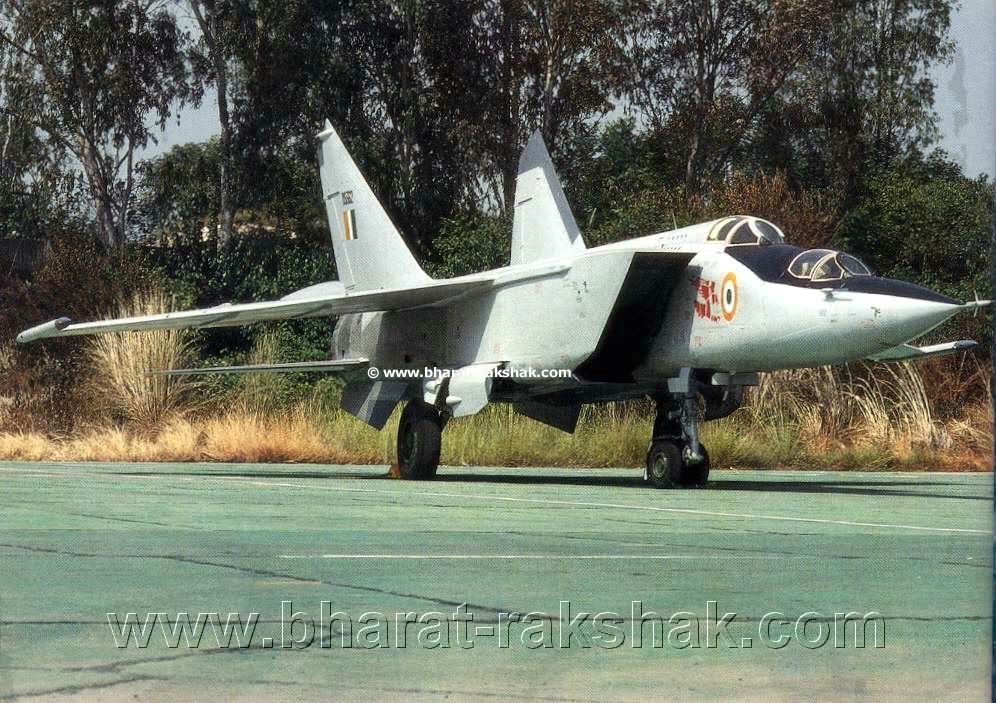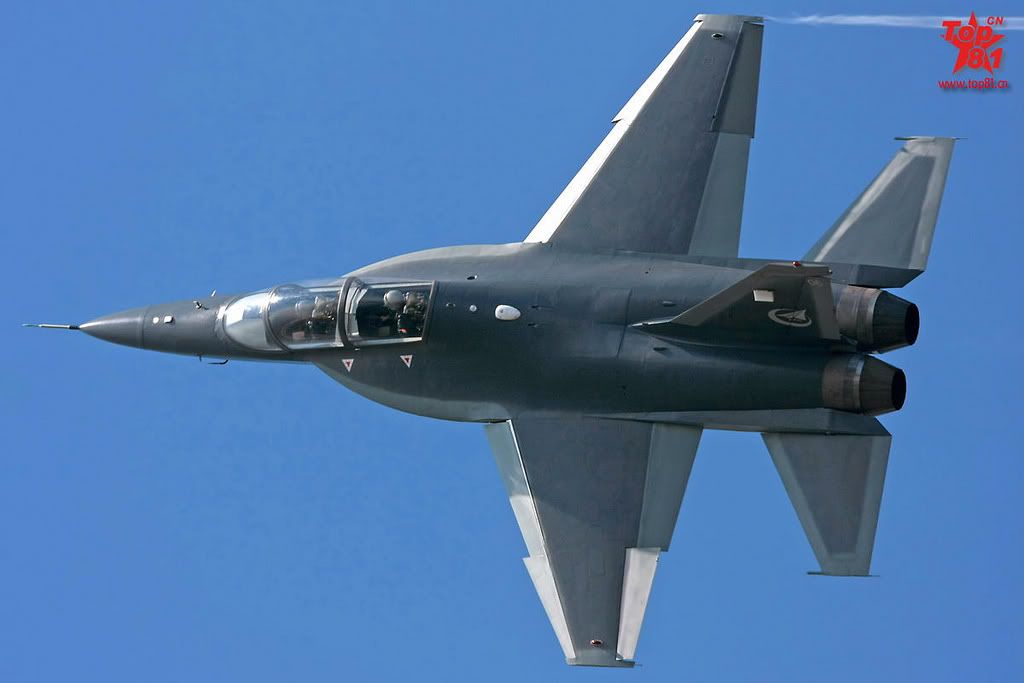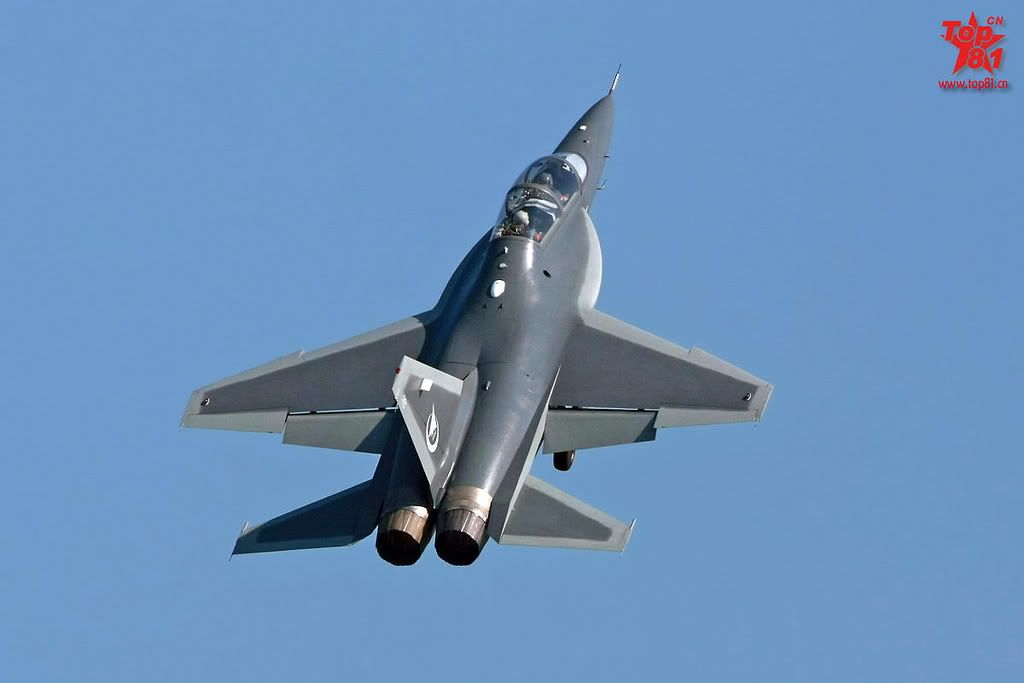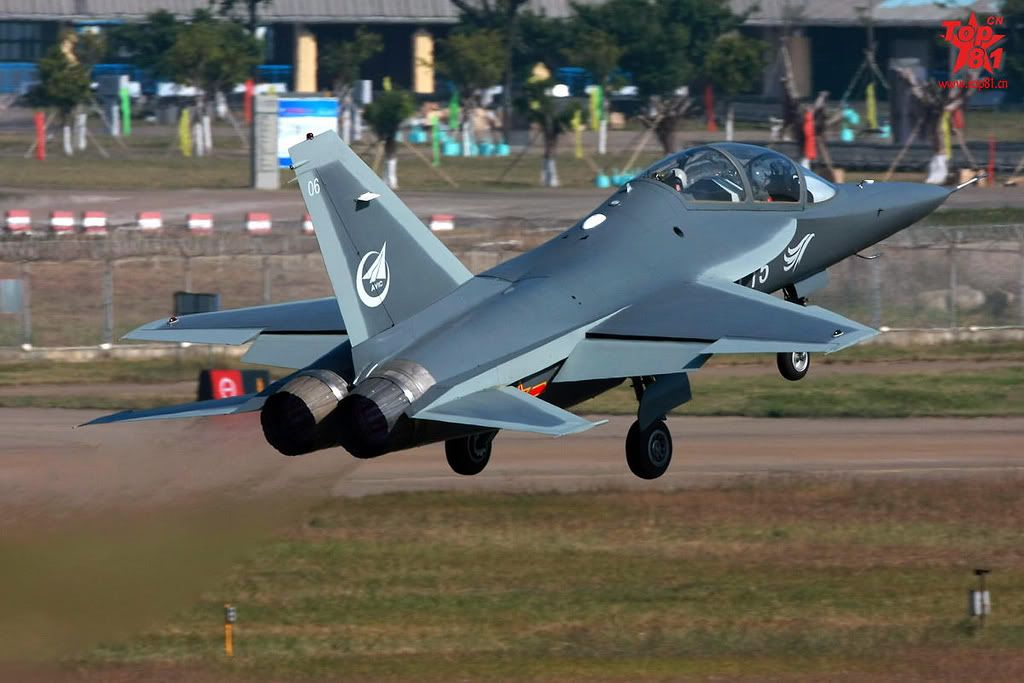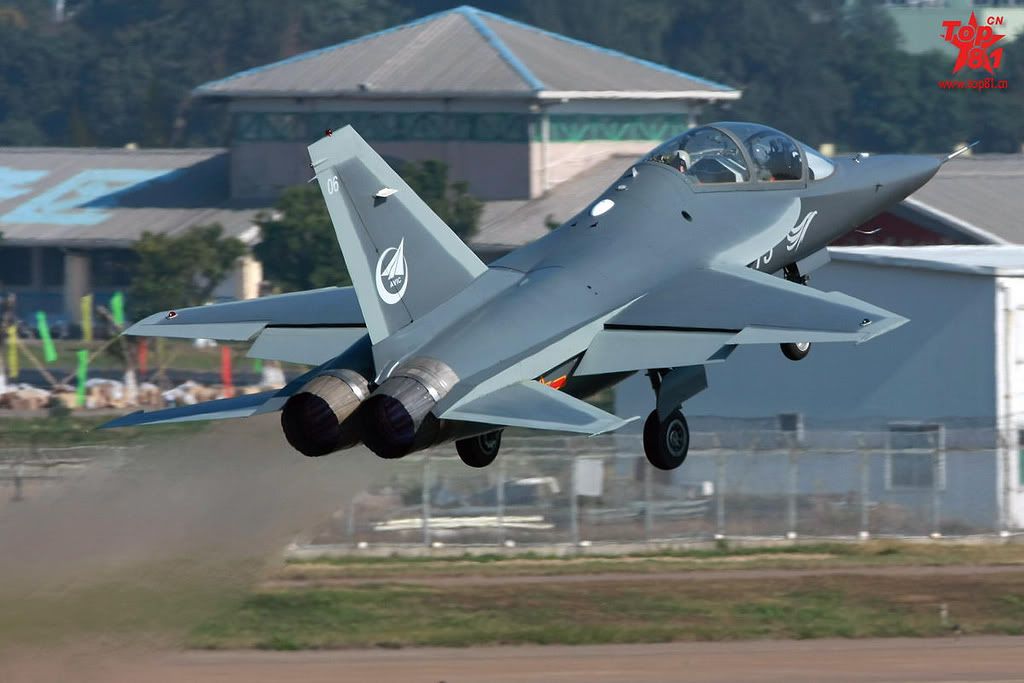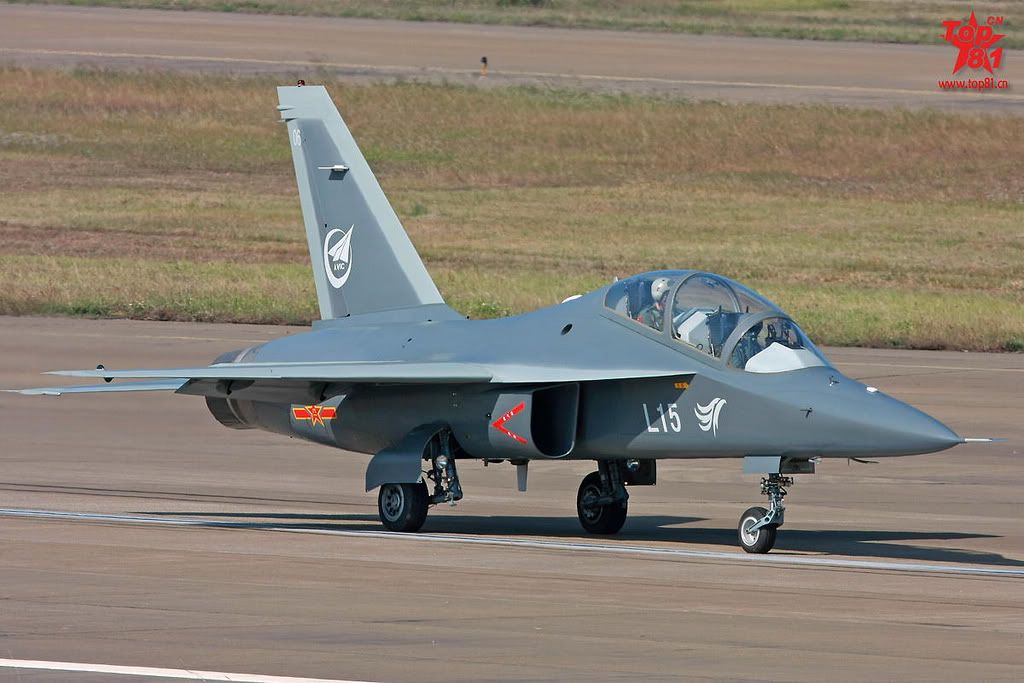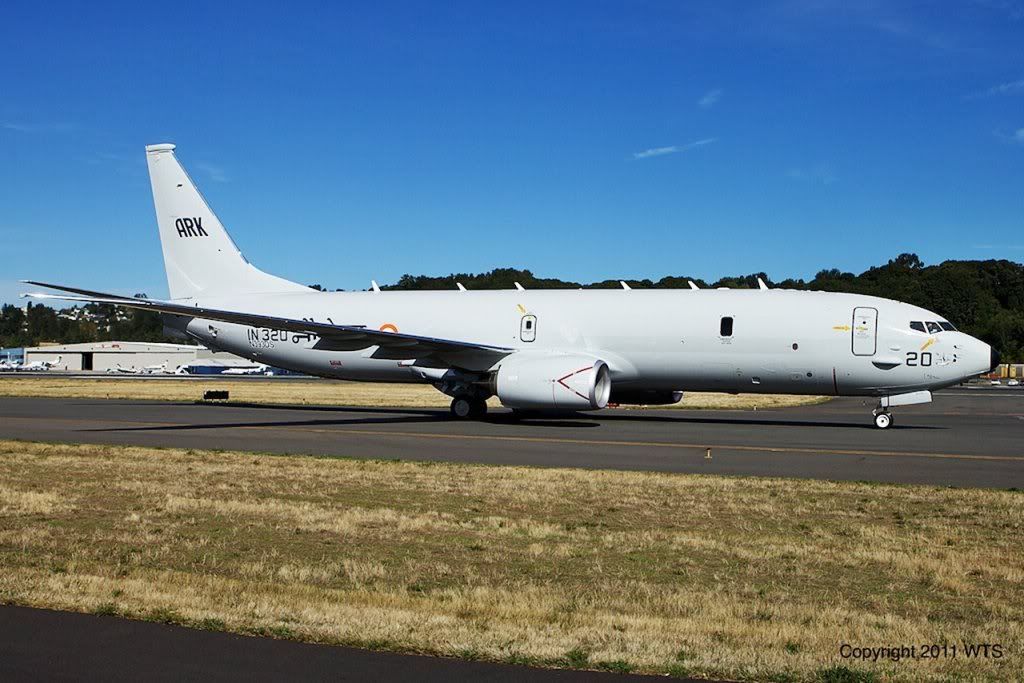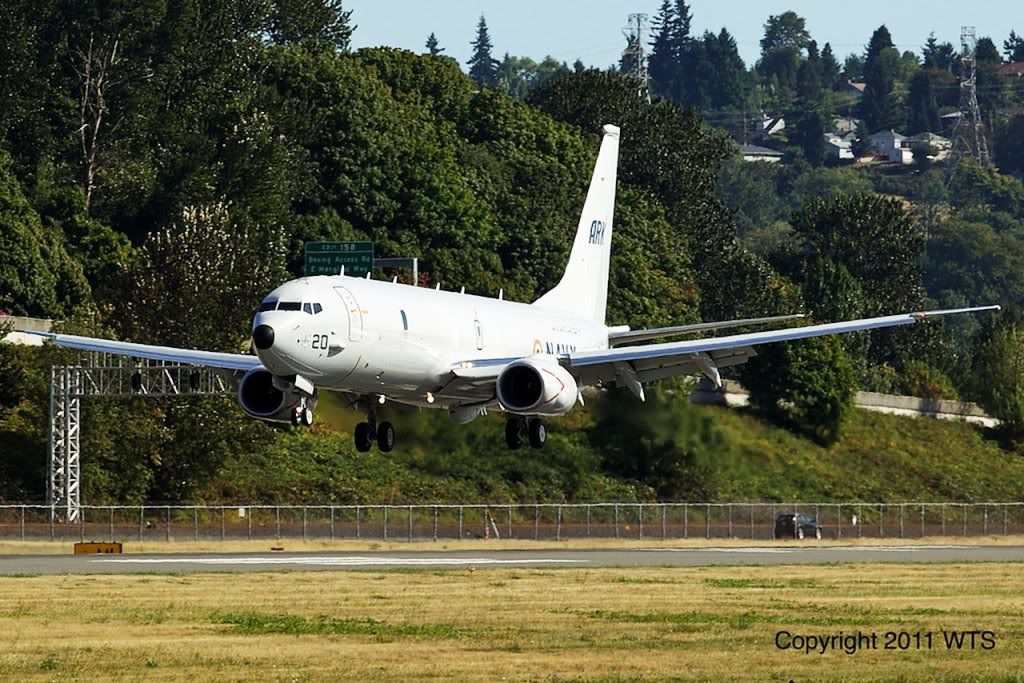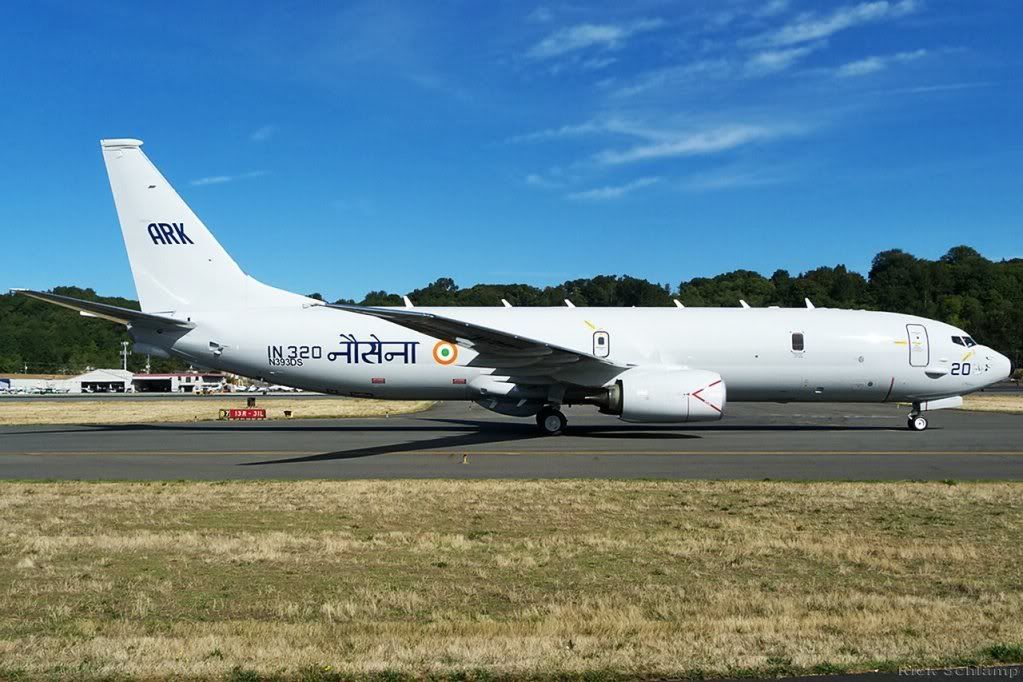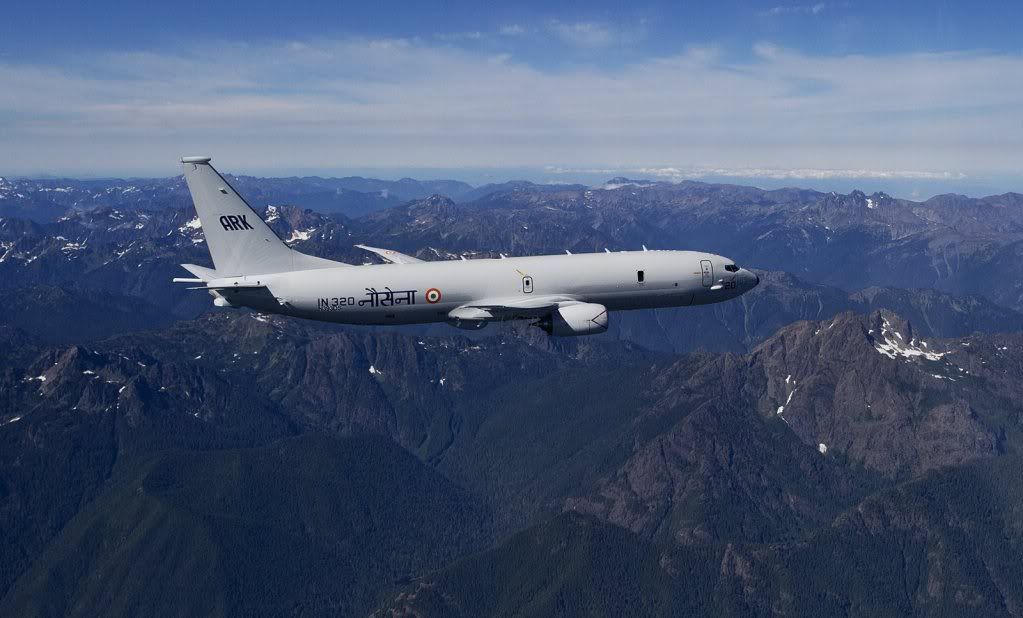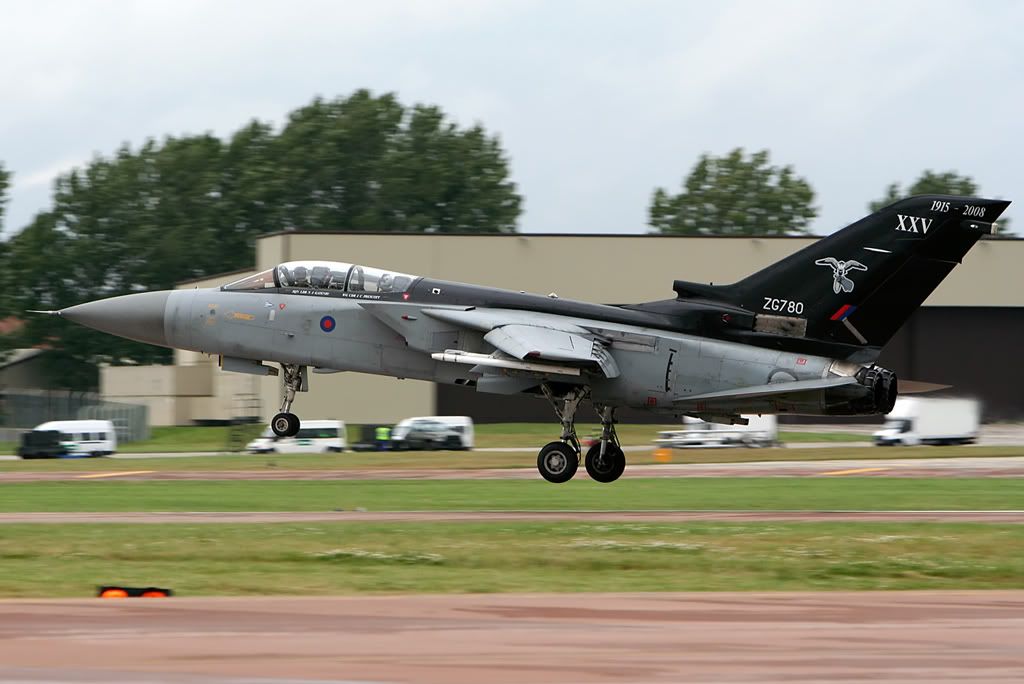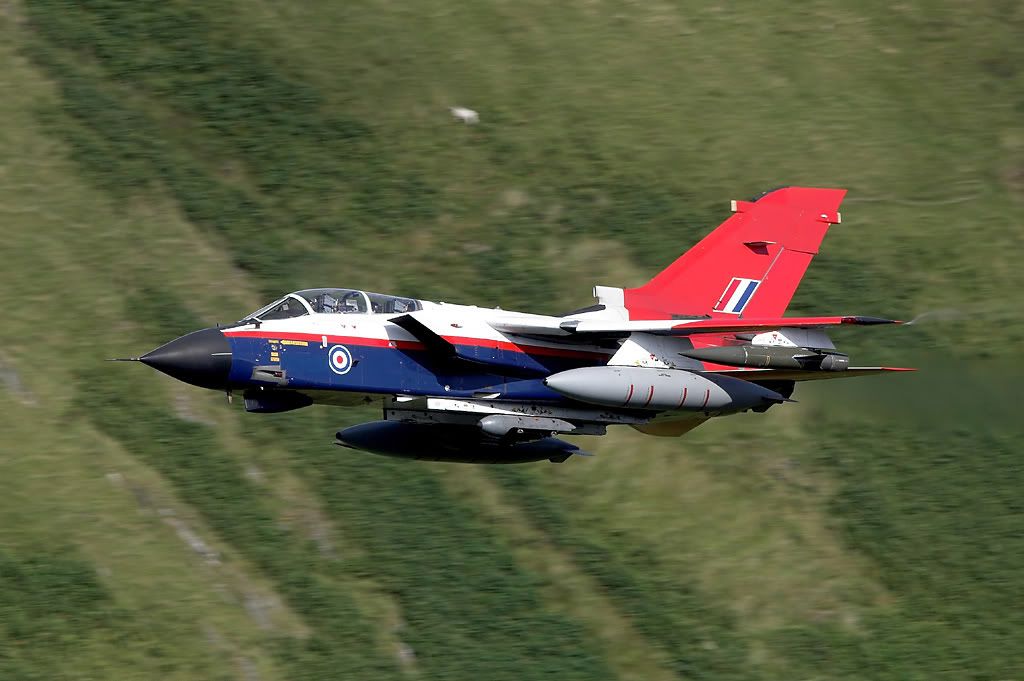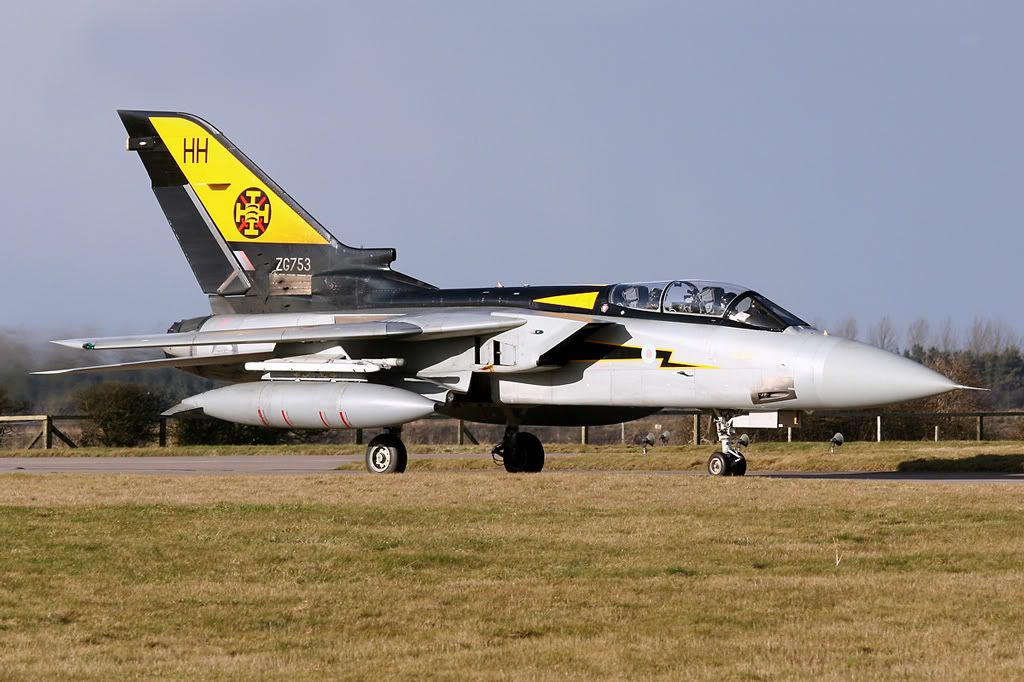Friday, January 27, 2012
Sunday, January 22, 2012
Block 3 Jf-17 XL : Cranked arrow delta wing
Another one of my Jf-17 XL series, as previously seen here and here . Inspired from F-16 XL mod idea. I am pretty anthusiastic about it as the stats that F-16 XL project provided are too stunning to ignore. Inspired from the F-16 XL project, this modification gives JF-17 Thunder
a substantial increase in payload, range, and speed. Unlike my previous edits, this is one features wings almost like the
crancked arrow wings of F-16XL, Primarily intended for Strike role,
the JF-17 XL can carry twice the payload of the JF-17, 40% further.
Just like many of my edits, this one too is not so high on the artistic side of things. Small patches of discoloration, rough texture, out of line pixels etc leave much to be desired, but basically i just want the idea to get around. Like in this particular edit, i just want to show how a crancked arrow wing would look on JF-17 thunder, minor bugs and labour intensive tweaks , i'll leave them for some other time to be addressed.
i'll try to add increase wing area more in further edits . Even though i know it is a far cry, im just throwing the idea out there never-the-less . but i think this option should be considered by PAF, as the increase in performance and capability stats is simply too impressive to ignore, as demoed by F-16 xl programe. It would require major re designing, no doubt, but if the resulting product gives range and weapon load capacity equal to Fc-20, then we can have a less expensive weapon system at our disposal. Not to mention the reduced operating and maintence costs as major sub systems, avionics and engine will be standardised as the rest of Jf-17 fleet .
i'll try to add increase wing area more in further edits . Even though i know it is a far cry, im just throwing the idea out there never-the-less . but i think this option should be considered by PAF, as the increase in performance and capability stats is simply too impressive to ignore, as demoed by F-16 xl programe. It would require major re designing, no doubt, but if the resulting product gives range and weapon load capacity equal to Fc-20, then we can have a less expensive weapon system at our disposal. Not to mention the reduced operating and maintence costs as major sub systems, avionics and engine will be standardised as the rest of Jf-17 fleet .
3d realistic jf-17 thunder fighter - JF-17 Thunder Fighter V2 Rigged by 3d_molier
3d realistic jf-17 thunder fighter - JF-17 Thunder Fighter V2 Rigged by 3d_molier.
Priced at 249.00 $, this is an awesome render by 3d_molier at Turbo Squid .
| High resolution and realistic, fully detailed and textured JF-17 Thunder
Fighter V2 Rigged. With interior. Comes with detailed color map
textures. Detailed enough for close-up renders. All parts are separate and pivoted for animation. Moving parts are linked to helpers for easy control. Originally modelled in 3ds max 8. Final images rendered with Vray. The 3ds max zip file contains also vray and standard materials scenes. ********************************* Features: - High quality polygonal model - correctly scaled accurate representation of the original objects. - Model resolutions are optimized for polygon efficiency (in 3DS MAX the meshsmooth function can be used to increase mesh resolution if necessary). - All colors can be easily modified. - Model is fully textured with all materials applied. - All textures and materials are included and mapped in every format. - Max models grouped for easy selection & objects are logically named for ease of scene management. - No part-name confusion when importing several models into a scene. - No cleaning up necessary, just drop your models into the scene and start rendering. - No special plugin needed to open scene. ********************************* Models: 51 objects 2 textures: Quads: 85230 Points: 46500 ********************************* File formats: - 3ds Max 8 Contains also vray and standard materials scenes! ********************************* Textures formats: 1 texture(.jpg)(8192x8192) 1 texture(.jpg)(4096x4096) ********************************* Hope you like it! Also check out my other models, just click on my user name to see complete gallery. © 3d_molier - 2012 |
JF-17 Thunder Block 2 with Canards
Another Jf-17 with canard modification. Posted an earlier here. Canard is the French word for duck. Some of the early canard designs bore
a strange resemblance to their namesakes. Oddly enough, canard in English
means a gross exaggeration or hyperbole.
Advantages of Canards :
Advantages:
- Possibility for very good stalling characteristics without elevator
stops.
- Sometimes a desirable layout from the packaging standpoint: Main wing
carry-through behind cabin, pusher engine installation simplified.
- Synergistic use of winglets for directional stability.
- In certain cases a simplified control linkage is possible.
- When wing flaps are not desired (for simplicity as in ultralights, or
competition rules as with standard class sailplanes for example) the CLmax
of a canard may exceed that of an aft-tail airplane.
- For unstable aircraft, canard designs may have a CLmax and/or drag
advantage.
- Control authority is larger for unstable canard aircraft at high CL than for unstable aft-tail designs.
Sukhoi tests new fighter : Su-35S
Russian aircraft manufacturer Sukhoi has flight tested its Serial
Three Su-35S Flanker-E multipurpose jet fighter for the first time.

During the test Tuesday, which lasted more than two hours, the aircraft's propulsion and control systems were put through their paces and "proved to be flawless," the company said.
Additional details on the initial flight test have not been disclosed.
The Su-35S is based on the earlier Su-27 but with an improved airframe, two central digital computers, advanced avionics and new radar with phased array antennas.
The closest competitor aircraft to the Su-27, which was introduced into service in 1988, is the U.S. F-15 Eagle.
With increased fuel capacity, the range of the Su-35S is more than 2,200 miles.
The maximum speed at altitude is about 1,400 mph. Its ceiling is 59,000 feet.
Sukhoi said the Su-35S can detect aircraft out to a range of nearly 250 miles, farther than that of other combat aircraft.
The Generation 4++ fighter's radar can reportedly track simultaneously 30 aerial targets and engage eight as well as track four ground targets and engage two.
Weaponry carried by the Su-35 include a 30mm cannon, laser-guided and unguided bombs, anti-radar missiles, anti-aircraft missiles and missiles for use against maritime targets.
With reduced protruding sensors and application to the fuselage of special coatings, the Flanker-E has a reduced radar signature.
The first two Su-35S planes (Serial One and Serial Two) were delivered to a Russian government testing center in August and have already performed more than 400 test flights.
The testing has involved propulsion, aircraft maneuverability, stability and control, as well as functioning of the aircraft navigation system.
Sukhoi projects the service life of the aircraft as 6,000 flight hours and a planned operational life of 30 years.
Potential export customers of the SU-35 aircraft are said to include China, India, Malaysia, Brazil and Indonesia.
Source: Sukhoi tests new fighter

During the test Tuesday, which lasted more than two hours, the aircraft's propulsion and control systems were put through their paces and "proved to be flawless," the company said.
Additional details on the initial flight test have not been disclosed.
The Su-35S is based on the earlier Su-27 but with an improved airframe, two central digital computers, advanced avionics and new radar with phased array antennas.
The closest competitor aircraft to the Su-27, which was introduced into service in 1988, is the U.S. F-15 Eagle.
With increased fuel capacity, the range of the Su-35S is more than 2,200 miles.
The maximum speed at altitude is about 1,400 mph. Its ceiling is 59,000 feet.
Sukhoi said the Su-35S can detect aircraft out to a range of nearly 250 miles, farther than that of other combat aircraft.
The Generation 4++ fighter's radar can reportedly track simultaneously 30 aerial targets and engage eight as well as track four ground targets and engage two.
Weaponry carried by the Su-35 include a 30mm cannon, laser-guided and unguided bombs, anti-radar missiles, anti-aircraft missiles and missiles for use against maritime targets.
With reduced protruding sensors and application to the fuselage of special coatings, the Flanker-E has a reduced radar signature.
The first two Su-35S planes (Serial One and Serial Two) were delivered to a Russian government testing center in August and have already performed more than 400 test flights.
The testing has involved propulsion, aircraft maneuverability, stability and control, as well as functioning of the aircraft navigation system.
Sukhoi projects the service life of the aircraft as 6,000 flight hours and a planned operational life of 30 years.
Potential export customers of the SU-35 aircraft are said to include China, India, Malaysia, Brazil and Indonesia.
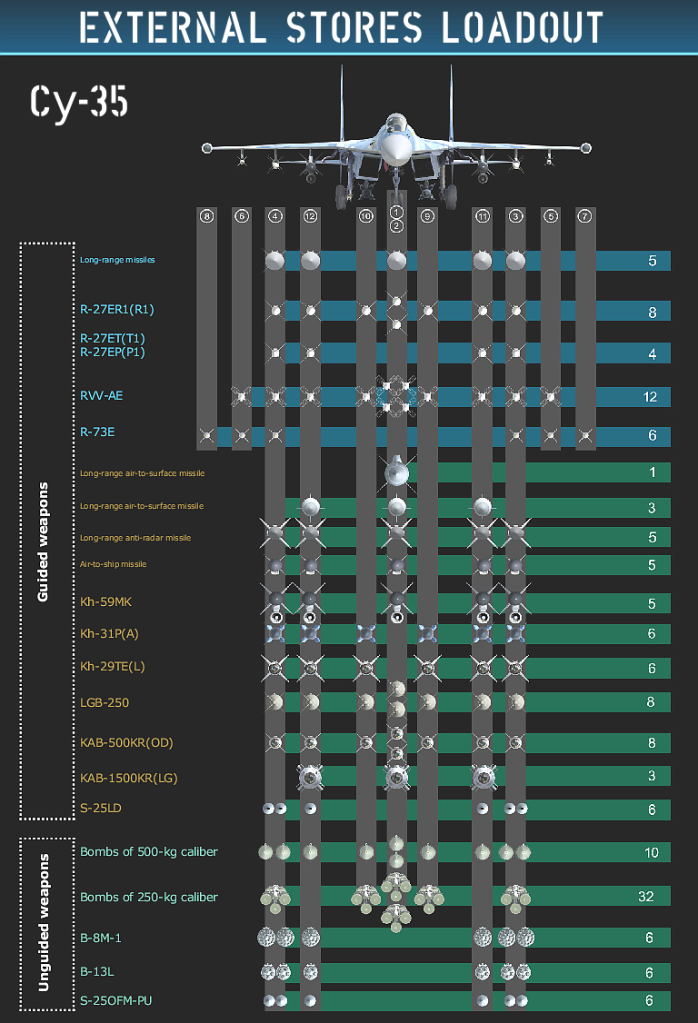 |
| Su-35 KNAAPO Brochure Loadouts |
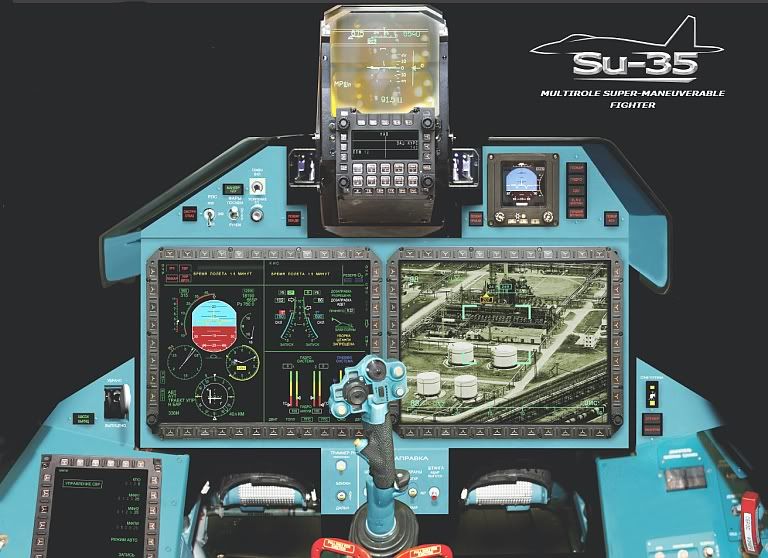 |
| Su-35 Cockpit |
Source: Sukhoi tests new fighter
Argentinian Air Force
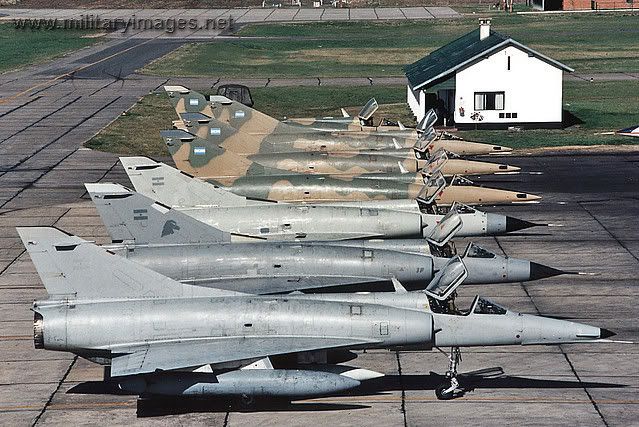 |
| Together with Mirage 5 aircraft brought up to 'Finger' standard, the A-4AR forms the backbone of the current FAA which still has a way to go with regard to force-wide modernisation. |
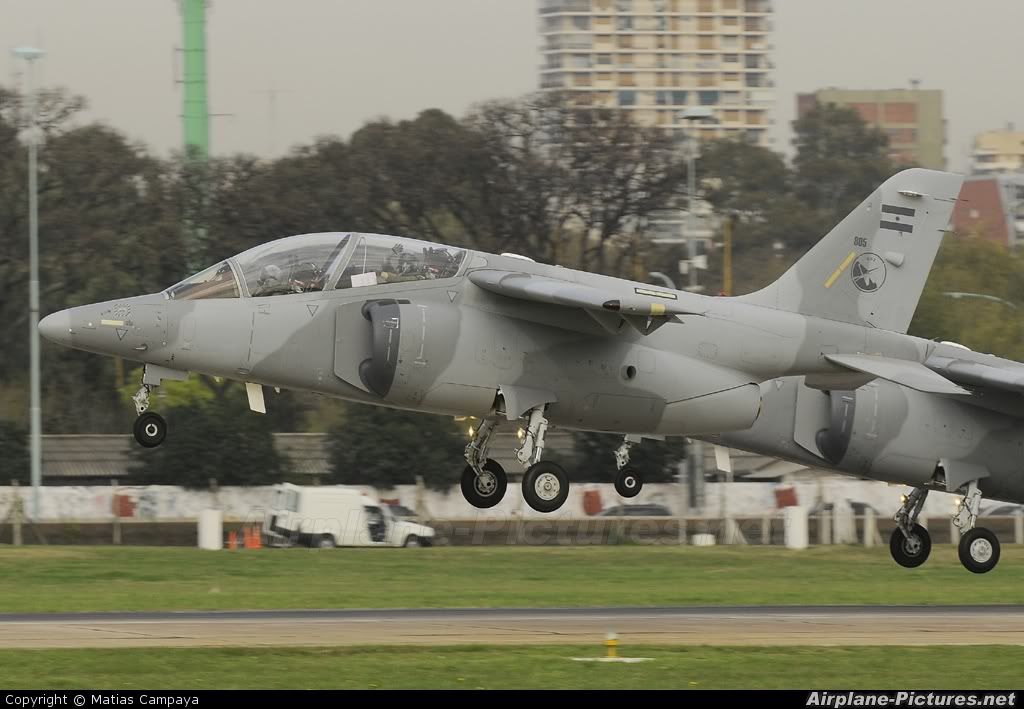 |
| A-4AR Fightinghawk, an upgraded version of the Skyhawk, in the second halve of the nineties. |
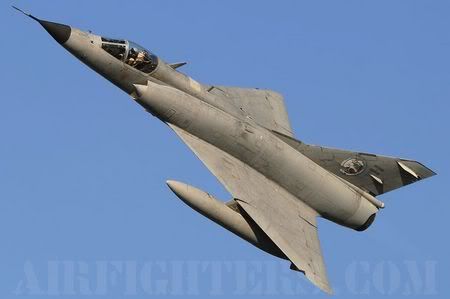 |
| FAA reinforced itself again to make up for the encountered losses. Mirage 3C were obtained from Israel, Mirage 5 were provided by Peru. |
Sunday, January 15, 2012
Saturday, January 14, 2012
Thursday, January 12, 2012
Wednesday, January 11, 2012
Jf-17E Block 3 : Thunder XL
Inspired from the F-16 XL project, this modification gives JF-17 Thunder a substantial increase in payload, range, and speed. Unlike the crancked arrow wing of F-16XL, this particular Jf-17 mounts a diamond shaped wing, commonly associated with YF-23 Black Widow. Primarily intended for Strike role, Block 3 because of its increased internal fuel capacity and payload,
the JF-17 XL can carry twice the payload of the JF-17, 40% further.
The increased payload was carried on 17 hardpoints, which were
arranged as follows:
6 wing weapons stations (750 lb capacity)
4 semi-submerged SD-10A stations
2 wingtip stations
1 centerline station
2 wing "heavy / wet" stations (2000 lb)
2 chin stations for Targetting/ navigational pods.
General characteristics:
Crew: 2
Length: 50 ft 2 in (16.51 m)
Wingspan: 31 ft 3 in (10.44 m)
Height: 15 ft 7 in (5.36 m)
Wing area: 533 ft2 (58.81 m2)
Empty weight: 15,000 lb (7,980 kg)
Max takeoff weight: 28,000 lb (14,775 kg)
Powerplant: 1× WS-10 turbofan
Dry thrust: 17,155 lbf (76.3 kN)
Thrust with afterburner: 28,984 lbf (128.9 kN)
Performance:
Maximum speed: Mach 2.0
Range: 2,480 nm (2,850 mi, 4,590 km)
Service ceiling: 50,000 ft (15,240 m)
Rate of climb: 62,000 ft/min (315 m/s)
6 wing weapons stations (750 lb capacity)
4 semi-submerged SD-10A stations
2 wingtip stations
1 centerline station
2 wing "heavy / wet" stations (2000 lb)
2 chin stations for Targetting/ navigational pods.
General characteristics:
Crew: 2
Length: 50 ft 2 in (16.51 m)
Wingspan: 31 ft 3 in (10.44 m)
Height: 15 ft 7 in (5.36 m)
Wing area: 533 ft2 (58.81 m2)
Empty weight: 15,000 lb (7,980 kg)
Max takeoff weight: 28,000 lb (14,775 kg)
Powerplant: 1× WS-10 turbofan
Dry thrust: 17,155 lbf (76.3 kN)
Thrust with afterburner: 28,984 lbf (128.9 kN)
Performance:
Maximum speed: Mach 2.0
Range: 2,480 nm (2,850 mi, 4,590 km)
Service ceiling: 50,000 ft (15,240 m)
Rate of climb: 62,000 ft/min (315 m/s)
Hongdu L-15 Falcon
The Hongdu
L-15 Falcon made it's maiden flight in 2006. This advanced trainer
is competing for the PLAAF's next generation advanced trainer aircraft programme against
the Guizhou JL-9.
Development
of this aircraft was assisted by Russian Yakovlev design bureau,
hence it's resemblance to the
Yak-130.
The L-15 is
intended to train pilots to fly high-performance forth-generation
aircraft, such as the
J-10 and
Su-27. It is also suitable to complete
all basic jet flight training courses.
Aircraft is
fitted with two Ukranian AL-222K-25F turbofan engines with afterburners.
If this aircraft is chosen by the PLAAF, production license for this
engine will be obtained.
The L-15 has
secondary light attack capability. It has four underwing and two
wingtip hardpoints to carry various weapons, including short-range
air-to-air missiles, air-to-ground missiles, bombs and rocket pods.
This
aircraft features a number of advanced technologies such as digital
fly-by-wire, hands on throttle and stick controls. It also has good
aerodynamic performance.
The L-15
Falcon is more advanced in terms of technology comparing with the
JL-9, however it is also more expensive
to produce. If this aircraft is chosen by the PLAAF, first
operational trainers will become available as early as 2008. The
L-15 is also proposed for the export customers.
Boeing P-8i Indian Navy
Description and Purpose
The P-8I is a long-range anti-submarine warfare, anti-surface warfare, intelligence, surveillance and reconnaissance aircraft capable of broad-area, maritime and littoral operations. The P-8I is a variant of the P-8A Poseidon that Boeing is developing for the U.S. Navy.This military derivative of the Next-Generation 737-800 combines superior performance and reliability with an advanced mission system that ensures maximum interoperability in the future battle space.
Customer
The Indian navy is the first international customer for the P-8. Boeing signed a contract Jan. 1, 2009, to deliver eight long-range maritime reconnaissance and anti-submarine warfare aircraft to the Indian navy. Boeing will deliver the first P-8I within 48 months of contract signing, and the remaining seven by 2015.India’s immediate need is for eight aircraft, but Boeing believes there is long-term potential for additional aircraft sales.
India’s immediate need is for eight aircraft, but Boeing believes there is long-term potential for additional aircraft sales.
General Characteristics
|
Propulsion: |
Two CFM56-7 engines providing 27,300 pounds thrust each |
|
Length: |
39.47 meters |
|
Wing Span: |
37.64 meters |
|
Height: |
12.83 meters |
|
Maximum Takeoff Gross Weight: |
85,139 kilograms |
|
Speed: |
490 knots (789 km/h) |
|
Range: |
1,200+ nautical miles, with 4 hours on station (2,222 kilometers) |
|
Ceiling: |
12,496 meters |
|
Crew: |
9 |
Background
Boeing was awarded a $3.89 billion contract for the system development and demonstration (SDD) phase of the P-8A Poseidon for the U.S. Navy on June 14, 2004. SDD activities include developing and integrating all the necessary software and onboard mission systems and developing training systems.The P-8I is the first international model of the P-8A. In July 2010, Boeing successfully completed the final design review (FDR) for P-8I, locking in the design for the aircraft, radar, communications, navigation, mission computing, acoustics and sensors, as well as the ground and test support equipment. The final design review also paves the way for the program to begin assembling the first P-8I aircraft.
Miscellaneous
Boeing and its industry partners provide unrivaled expertise in both large-scale systems integration and network centric operations, plus unquestioned leadership in developing and customizing military and commercial products for maritime forces. Boeing leads an industry team that consists of CFM International, Northrop Grumman, Raytheon, GE Aviation and Spirit AeroSystems. In addition, Boeing anticipates substantial industrial participation on the aircraft from Indian industry.JF-17 Thunder fighter jet Block II : Gripen of the East .
Further re-touches to the last edit. More like Gripen NG. The rear landing gears retracting into the LERX, leaving room for 2 LGBs to be carried under the belly. Two LCAMs on inner wing pylons. Looks similar to Storm-Shadow ..... may be an improved version of Ra'ad. Who knows ..... ?
The Pakistan Air Force will start receiving the improved version of the JF-17 Thunder fighter jet Block II. The Block II Thunder will include newer and improved capabilities including data link and electronic warfare capabilities aerial refuelling, new radar & avionics.
Read more: http://pakmr.blogspot.com/2011/11/block-ii-jf-17-thunder-to-enter-into.html#ixzz1iyF5iflY
The Pakistan Air Force will start receiving the improved version of the JF-17 Thunder fighter jet Block II. The Block II Thunder will include newer and improved capabilities including data link and electronic warfare capabilities aerial refuelling, new radar & avionics.
The JF-17 Thunder Block II will
also expend its inventory of new generation precision guided weapons
including cruise missiles. Pakistan and China are also developing a
two-seater version of the JF-17 Thunder.
The deliveries of the Block II Thunder
to Pakistan Air Force are scheduled to start from the second half of
the 2012 and will continue till 2015. From 2016, JF-17 Thunder Block III
will enter into production .
Pakistani Air Chief Marshall Rao
Qamar Suleiman has said at the Dubai Air Show, “We offer performance
comparable to U.S. and European fighters when it comes to radar,
dogfight missile, range and BVR [beyond visual range] capabilities, for
one third of the cost.”
The officials of the joint
marketing team for the promotion and sale of the JF-17 Thunder has said
that at-least five middle eastern countries has shown interest in the
JF-17 Thunder and will be test flying the aircraft for in future to
experience its performance first hand.
The People's Liberation Army Air
Force (PLAAF) is also evaluating the FC-1/JF-17 Thunder and will take
decision regarding its induction into the service in near future
Read more: http://pakmr.blogspot.com/2011/11/block-ii-jf-17-thunder-to-enter-into.html#ixzz1iyF5iflY




